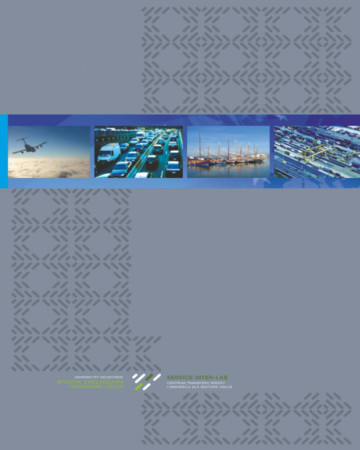
ISSN: 1644-275X
eISSN: 2353-3005
OAI
DOI: 10.18276/ptl.2016.34-13


Issue archive /
nr 2 (34) 2016
The impact of diversification of regional economic conditions on the economic efficiency of intermodal transport in Europe
| Authors: |
Dariusz
Milewski
Uniwersytet Szczeciński, Wydział Zarządzania i Ekonomiki Usług Bogusz Wiśnicki Maritime University of Szczecin, Transport Engineering and Economics Faculty |
| Keywords: | intermodal transport economic efficiency transport costs |
| Data publikacji całości: | 2016 |
| Page range: | 10 (135-144) |
| Klasyfikacja JEL: | O30 R30 |
Abstract
The aim of the article is to present a problem of an intermodal connection, linking two different European regions, i.e. economically developed and developing countries. The authors identified determinants of technological and economic nature, which aim to achieve a desired economic efficiency of the intermodal transport. The economic imbalance of different regions in Europe refers to the following issues: the imbalance of the flows of cargo, lack of the uniform technological standards and differences in the economic environment. During the conducted research, authors analysed the cost of intermodal connections based on the use of three rail-road technologies dedicated to transport of semi-trailers. The analysed parameters included: distance of transport, mass of cargo, investment and operating costs. The calculations allowed would formulate conclusions and recommendations necessary for supporting conditions, which should be met, in order that the intermodal transport can effectively compete with the pure road transport.
Download file
Article file
Bibliography
| 1. | Arendt, T., Seidelmann, Ch. (eds.) (2010). Analysis and Comparison for Intermodal Transport Chains in European Markets: Handling and Transport Techniques. January. |
| 2. | Arnold, P., Peeters, D., Thomas, I. (2004). Modelling a Rail/Road Intermodal Transportation System. Transportation Research Part E, 40 (3), 255–270. |
| 3. | Dărăbanț, S., Ștefănescu, P., Crișan, R. (2012). Economic Benefits of Developing Intermodal Transport in the European Union. Annals of the University of Oradea. Economic Science Series, 21 (2), 81–87. |
| 4. | Henttu, V., Multaharju, S. (2011). Transshipment Costs of Intermodal Transport in Finnish Context. Research Report. Faculty of Technology Management, Industrial Engineering and Management Tutkimusraportti Research Report 234. Kouvola. |
| 5. | Krasoń, W., Niezgoda, T. (2013). Koncepcja i wybrane aspekty badań wagonu kolejowego do przewozu naczep samochodów ciężarowych. Prace Naukowe Politechniki Warszawskiej. Transport, 98, 321–330 |
| 6. | Macharis, C. (2000) Strategische modellering voor intermodale terminals. Socio-economische evaluatie an delocatie van binnenvaart/weg terminals in Vlaanderen. PhD Thesis. Brussel: Vrije Universiteit Brussel. |
| 7. | Nowakowski, T., Kwaśniowski, S., Zając, M. (2010). Transport intermodalny w aspekcie realizacji modelu systemu logistycznego polski. Prace Naukowe Politechniki Warszawskiej. Transport, 76, 103–111. |
| 8. | Starzyńska, D., Walasek, R. (2013). Koszty logistyczne w transporcie intermodalnym – wyniki badań. Logistyka, 2, 122–129. |
| 9. | UIRR Report (2012). Study on Unaccompanied Combined Transport of Semitrailers through Switzerland. Final report. European Road-Rail Combined Transport. KombiConsult GmbH. 30 November. |
| 10. | Vrenken, H., Macharis, C., Wolters, P. (2005). Intermodal Transport in Europe. Brussels: EIA. |
| 11. | Wiśnicki, B., Milewski, D. (2014). Analysis of the Market Potential for Transport Using the Longer and Heavier Vehicles in Poland. Logistyka, 6, 13923–13928. |